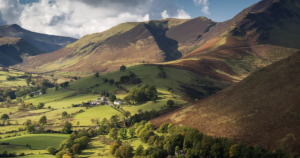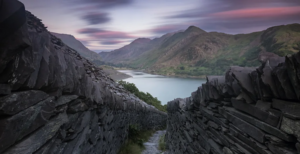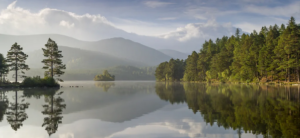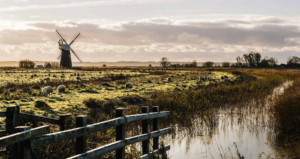Across England, Scotland, and Wales, 15 national parks proudly display a kaleidoscope of landscapes, ranging from the awe-inspiring majesty of the Cairngorms to the tranquil beauty of the Broads and from the gentle rolling hills of the South Downs to the breathtaking coastline of Pembrokeshire. These parks offer a treasure trove of diverse natural wonders.
In 2024, we celebrate a milestone anniversary – 75 years since the groundbreaking National Parks and Access to the Countryside Act of 1949, which laid the foundation for creating these national treasures.
This visionary legislation enabled the establishment of the first national park, the Peak District, in 1951 and ensured that the natural beauty and wildlife of the countryside would be protected and accessible to all, leaving a lasting legacy for future generations.
The establishment of the UK’s national parks culminated in prolonged political endeavours, drawing inspiration from the US model, as noted by Carey Davies, author of National Parks Of The United Kingdom.
As the world’s first nation to largely urbanize its population, the British recognized the vital importance of accessible natural sanctuaries and reconnections with the land, particularly in the aftermath of World War Two, leading to a concerted effort to preserve and protect these treasured spaces.
These national parks are cherished destinations for outdoor adventures, wildlife refuges, and peaceful oases. They are vital in addressing biodiversity loss, climate change, and well-being.
Davies highlights the UK’s five most stunning national parks, perfect for thrilling experiences, wildlife encounters, and soul-restoring tranquillity.
1. England, Lake District National Park

The Lake District in northern England enthrals millions with its captivating blend of majesty and charm. It is the UK’s most visited national park and a coveted UNESCO World Heritage site since 2017.
This breathtaking region showcases a striking juxtaposition of rugged mountain peaks, serene glacial lakes, and meticulously crafted landscapes, featuring iconic dry stone walls and picturesque sheep farms. These elements are harmoniously woven together to create a unique and unforgettable destination.
According to Davies, sheep farming has been an integral part of the park’s cultural identity since the Viking era, deeply rooted in its heritage. However, he also recognizes the valid concerns of environmentalists, who argue that excessive grazing has had a detrimental impact on the park’s natural beauty. This highlights the need for a balanced approach that preserves both the cultural significance of sheep farming and the park’s natural splendour.
The Lake District has been a timeless muse for literary luminaries such as William Wordsworth and Beatrix Potter. As Davies notes, the Romantic movement’s profound influence has transformed our understanding of mountains, reimagining them as majestic, awe-inspiring, and restorative rather than intimidating and unforgiving, shaping our appreciation for these natural wonders.
The enduring popularity of Beatrix Potter’s works is evident in the global visitors who flock to her former home in the Lake District. While leisurely boat cruises on lakes like Windermere, Ambleside, and Ullswater are a popular pastime, adventurous souls can opt for wild swimming and stand-up paddling for a more immersive experience.
Although the park can get crowded during summer, its vast expanse of 2,362 square kilometres and inaccessible peaks offer ample opportunities to find solitude and perhaps spark your creative writing.
2. Wales, Eryri National Park

In 2022, the Snowdonia National Park Authority committee used the Welsh names Yr Wyddfa and Eryri instead of their English counterparts to refer to Wales’ highest peak and the national park, respectively.
This move was followed by renaming the Brecon Beacons to Bannau Brycheiniog. Eryri is located in northwest Wales and boasts breathtaking mountain landscapes, making it an ideal destination for adventure seekers. According to Davies, the area offers diverse opportunities for outdoor enthusiasts, including climbing, scrambling, and adventurous walking.
The Snowdon massif, comprising Yr Wyddfa, the Glyderau, and Cader Idris, is characterized by rugged, angular features that distinguish it from the Lake District. The region’s unique rock formations, as seen in landmarks like Castell y Gwynt, showcase the remarkable effects of erosion.
Beyond its rugged rocks, Eryri features a diverse landscape of temperate rainforests, Celtic rainforests, and Arctic alpine flora, including alpine meadow grass. The region’s beauty is deeply rooted in human history, evident in iconic landmarks like Harlech Castle, perched on hills overlooking the Snowdonia coast, notes Davies.
Eryri has inspired writers and storytellers for centuries, with its rich cultural heritage woven into the fabric of the national park. The ancient Welsh tales of The Mabinogion, a collection of 11 medieval stories, are deeply rooted in the region’s landmarks, inviting readers to explore the places that inspired these timeless narratives.
The legend of Cader Idris, which promises that those who sleep on its slopes will awaken as poets or madmen, adds a whimsical touch to the park’s literary and mythological landscape.
3. Scotland, Cairngorms National Park

Situated in Scotland’s northeast, the Cairngorms National Park is the largest in the UK, spanning an impressive 4,528 square kilometres – nearly twice the size of the Lake District. Its vast expanse beckons outdoor enthusiasts, including hikers and bikers, with promises of adventure and exploration.
As the UK’s wildest and snowiest national park, the Cairngorms boasts a rugged beauty, towering granite mountains forming a kilometre-high plateau. This unforgiving landscape is characterized by extreme weather conditions, with winds reaching 170 mph. Yet, amidst this harsh environment, various wildlife thrives, including snow bunting, ptarmigan, and mountain hares.
The park also harbours remnants of the ancient Caledonian forest, which once covered Scotland but was largely destroyed by human activity. According to Davies, the Cairngorms offer a unique opportunity to explore native forests for hours or stand on the shores of Loch Eilein, surrounded by pine forest and sub-Arctic mountains, evoking a sense of connection to the landscapes of Scandinavia, North America, and Siberia.
Efforts are underway to ‘rewild’ parts of the Cairngorms National Park, enhancing its impressive biodiversity. The park is a haven for remarkable wildlife, including pine martens, wildcats, golden eagles, and the endangered capercaillie.
Ongoing discussions surround the potential reintroduction of native species, such as lynx and wolves, to restore balance to the ecosystem. This rewilding initiative aims to revitalize the park’s natural harmony and promote a healthier, more resilient environment for its inhabitants.
4. Wales, Pembrokeshire Coast National Park

Pembrokeshire’s national park status is a testament to its exceptionally diverse and dramatic coastline, which showcases a unique blend of geological and cultural heritage. According to Davies, the park’s rocky shores feature limestone sea cliffs that reveal the tectonic forces that shaped the landscape.
Wales’ south coast boasts a breathtaking coastline, featuring pristine beaches with delicate, eggshell-hued sand and crystal-clear turquoise waters, rivalling the beauty of Greece or the Caribbean.
This storied stretch of coastline is punctuated by historic landmarks, including ancient megalithic monuments like Pentre Ifan and Carreg Samson, which have stood the test of time for over 5,000 years, predating the Pyramids and Stonehenge and offering a glimpse into a rich and mysterious past.
Notable attractions include St David’s Cathedral in Britain’s smallest city, St David’s, and Strumble Head Lighthouse, built in 1908, which offers breathtaking views along the coast. Pembrokeshire is a birdwatcher’s paradise, with islands such as Skomer, Grassholm, and Ramsey hosting an incredible diversity of species.
These islands are a haven for vast colonies of seabirds, featuring an impressive array of species such as Manx shearwaters, puffins, guillemots, razorbills, and gannets, making Pembrokeshire a paradise for birdwatchers and avifauna enthusiasts. Moreover, the coastal waters are teeming with life, boasting vibrant kelp forests and a diverse array of marine life, waiting to be explored and discovered in the rocky coves.
To fully experience the beauty of this coastline, embark on the 186-mile Pembrokeshire Coast Path National Trail, which forms part of the Wales Coast Path. Alternatively, explore the coast by kayak or join a guided boat tour to the islands, teeming with birdlife for a unique and unforgettable experience.
5. England, The Broads National Park

The Broads National Park, spanning Norfolk and Suffolk, is Britain’s largest protected wetland area and boasts exceptional natural diversity. According to Davies, this region is home to a quarter of the country’s rarest species despite covering only 0.1% of the land. The park is a haven for wildlife, including common cranes, wildfowl, starlings, Norfolk hawker dragonflies, and swallowtail butterflies.
While it may lack towering peaks, the Broads’ unique beauty lies in its vast network of lakes, rivers, fens, marshes, and semi-submerged woodland, which creates a sense of seclusion and tranquility. Visitors can kayak through peaceful marshlands and reedbeds, spot otters, and hear the distinctive calls of bitterns.
This aquatic labyrinth is often likened to England’s Everglades, offering an unparalleled experience. With 125 miles of navigable waterways, boating is a popular pastime in the Broads, suitable for both day trips and extended getaways. According to Davies, the pace of life in the Broads is delightfully leisurely.
The region’s scenic landscape is dotted with over 60 historic windmills, including Thurne Mill, which has stood for over two centuries. These charming structures add a unique touch to the skyline and remind visitors of the area’s rich history and heritage.
The park’s boundaries also encompass a picturesque stretch of tranquil coastline, extending from Sea Palling to Winterton-on-Sea. This scenic area is notable for its thriving colony of green seals, which can frequently be spotted at Horsey, adding to the park’s diverse natural beauty and charm.

Jonathan is an avid automobile enthusiast who is passionate about all things on wheels. From the latest car models to classic vintage rides, I love exploring the automotive world’s intricate details and engineering marvels. With years of experience in test-driving, reviewing, and analyzing cars, I provide readers with comprehensive insights and honest opinions.
















